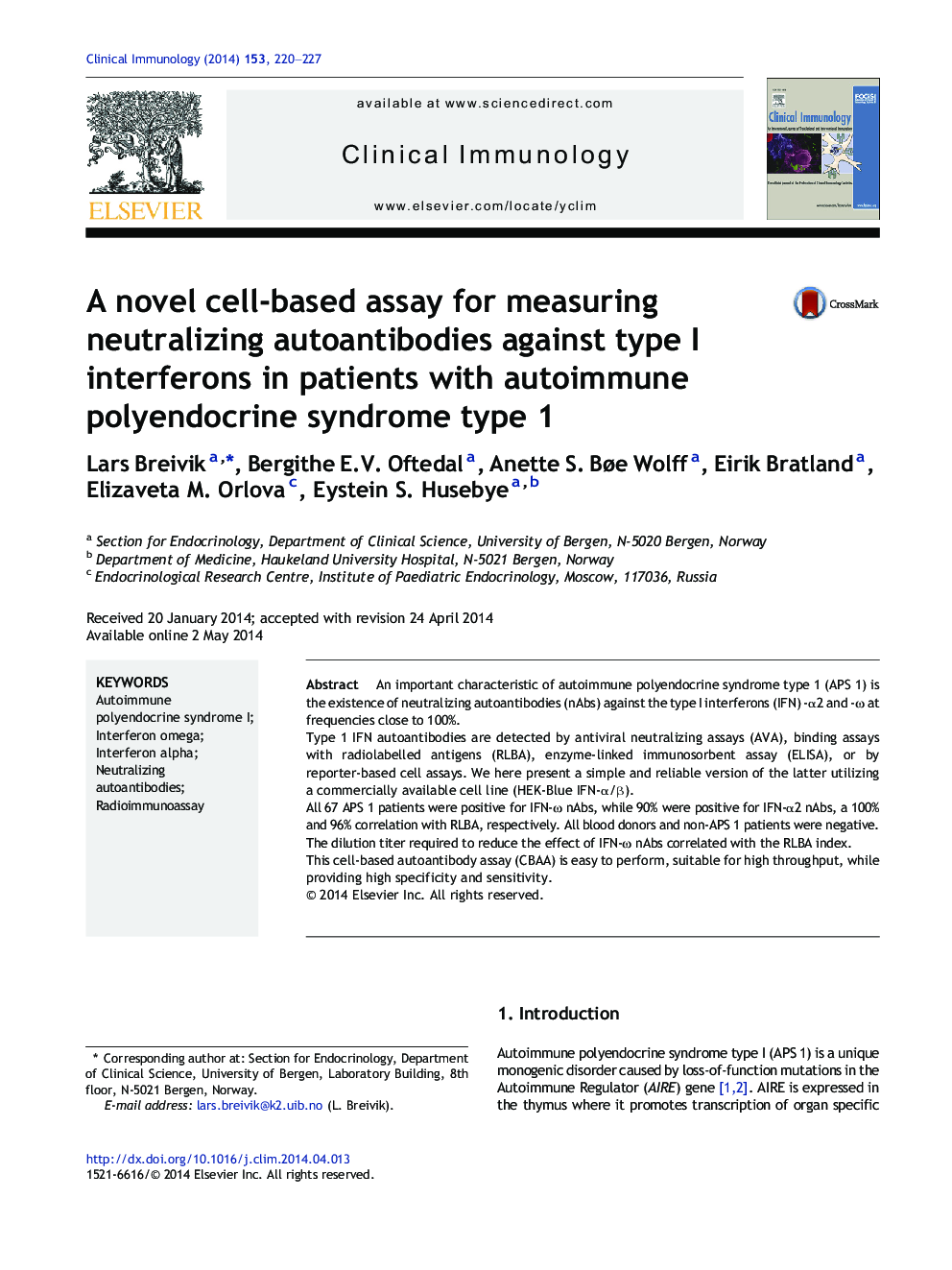| Article ID | Journal | Published Year | Pages | File Type |
|---|---|---|---|---|
| 6087483 | Clinical Immunology | 2014 | 8 Pages |
â¢A cell based assay for detecting neutralizing antibodies against type I IFN.â¢The assay is both easy and inexpensive to establish and use.â¢High correlation with existing assays.â¢The assay has low intra- and interassay variability.
An important characteristic of autoimmune polyendocrine syndrome type 1 (APS 1) is the existence of neutralizing autoantibodies (nAbs) against the type I interferons (IFN) -α2 and -Ï at frequencies close to 100%.Type 1 IFN autoantibodies are detected by antiviral neutralizing assays (AVA), binding assays with radiolabelled antigens (RLBA), enzyme-linked immunosorbent assay (ELISA), or by reporter-based cell assays. We here present a simple and reliable version of the latter utilizing a commercially available cell line (HEK-Blue IFN-α/β).All 67 APS 1 patients were positive for IFN-Ï nAbs, while 90% were positive for IFN-α2 nAbs, a 100% and 96% correlation with RLBA, respectively. All blood donors and non-APS 1 patients were negative. The dilution titer required to reduce the effect of IFN-Ï nAbs correlated with the RLBA index.This cell-based autoantibody assay (CBAA) is easy to perform, suitable for high throughput, while providing high specificity and sensitivity.
